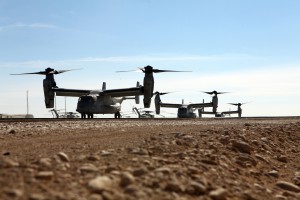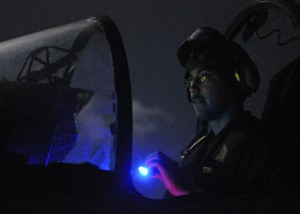08/14/2011 by Ed Timperlake
A key military and diplomatic result can occur from an action, which eliminates a bad result. In the social media or internet age, a problem that can be seen is more likely to be discussed than a problem which did not happen because of a military success. More often than not, core military professionalism enhanced by the appropriate equipment actually works and problems are avoided by NOT having a failure.
In a certain sense, the phenomenon of avoiding an outcome by having a capability to create a better outcome is central to military or diplomatic success. It is important to indicate the value of a platform, system or professional capability, which shapes avoidance of a negative outcome, as well as describing in terms of what it does. What a system can avoid is in many ways as important as describing what it can do.
In some ways, this is the military variant of a null hypothesis. One can prove the validity of the military platform, system and capability by what it avoids. One test’s its value by hypothesizing alternative outcomes absent the capability.
I once had an enjoyable discussion with Ron Maxwell the Director of the great American epic movie Gettysburg. His art and vision will truly stand the test of time. I was curious about all of his many challenges. He said one of the most difficult for both a Director and the actors in such a movie was to stay in the moment as it was historically playing out.
In other words, it was important not to act as the outcome was already pre-determined. The actors playing real life battlefield commanders had to assume they were making life and death decisions for thousands of lives and the fate of America without certainty of the outcome. That was the great success of the movie since both the Director and actors truly captured the moment-to-moment uncertainty of decision making in an epic historical battle.
In real life, Commanders are constantly faced with making decisions, some routine and in fact boring others as Gettysburg shows are decisions that can have huge consequences. It is why experienced leaders, not managers, are needed at all times in the American Military. And is one of the core differences between real commanders and cubical commandos.
A leader knows what to do in the moment of action. Getting to that moment requires preparation and attention to detail while inspiring all to perform their crucial responsibilities to the best of their ability. Training tactics and technology have to all come together to accomplish the mission.
Of course, a reactive enemy and the “fog of Battle” always comes into play.
Finally, Napoleon’s quip about wanting a “lucky” General is more real then people think and good commanders can both make their luck and also catch a break with a reactive enemy making a mistake. But they do not have perfect knowledge.
When a USAF F-15E Strike Eagle crew call sign “Bolar 34” ejected over Libya in the current NATO air war against Quadafi, they were in real difficulty without a trained rescue team. And a US Navy Marine team off the Libyan coast was trained and ready to save them.

The USS Kearsage Amphibious Readiness Group with Navy Commodore Pete Pagano Amphibious Squadron Four, and Col. Mark Desens’s 26th Marine Expeditionary Unit were in the right place at the right time.
The time of the operation was significantly reduced because of the team and their use of the Osprey aircrafts onboard. The time from order to execute to the 26th MEU’s MV-22 successful extraction, called a TRAP (Tactical Recovery of Aircraft and Personnel) recovery mission was 47 minutes. Those forty seven minutes may have changed the entire narrative of ongoing combat operations against Quadafi.
https://sldinfo.com/usnusmc-ready-now/
From Gettysburg and other bloody Civil War Battles, America has shown as a nation we will accept horrendous causalities if the individual warrior and their families think the cause is just. However, there is another American core value as exemplified by the American military saying, “leave no one behind.” The TRAP mission captured that battlefield ethos.
However, what if the aircrew hadn’t been saved but rather fallen into the hands of Quadafi’s forces? Current events would be way different. The leader of Libya maybe a lot of horrendous things but over time he knows how to play the propaganda game as a master. One American in enemy hands, if history is any guide, would have pivoted the world wide 24/7 media to a “POW Story.”
Whatever one thinks of the political decision to have a NATO Libyan Air War, it is being fought by mature adults who saved the day in the TARP mission. An Administration can be vexed and paralyzed by a POW story line. President Obama can be thankful of not having to face the null hypothesis which would have resulted from NOT having the TRAP team armed with the Osprey.
Unfortunately, President Carter found out the consequences of having hostage Americans on events when he devoted all his attention to the Iranian’s taking over our Embassy. The narrative “America Held” hostage became one of the dooming mantras for his Presidency, along with a “misery index” of domestic financial disaster.
President Regain faced two hostage situations, after scaring the Iranians into releasing the hostages as he was being sworn into his First Term. One was Iran/Contra, and enough has been written about that. The second was a USN A-6 Crew shot down over Lebanon. The Pilot was killed as a result of the ejection and the Bombardier/Navigator (B/N) Lt. Robert “Bobby” Goodman survived and was held captive for 30 days. Lt Goodman was eventually freed with a deal negotiated by the Reverend’s Jackson and Wright among others along with Nation of Islam Leader Louis Farrakhan. They presented a letter from President Reagan to Syrian President Assad calling for cooperation in bringing peace to Lebanon.
http://en.wikipedia.org/wiki/Bobby_Goodman
Now with the horrific weapon and the will to use it by Islamic fanatics of filming captives being beheaded, the issue of being held captive has escalated to an entirely new level of media attention. One US or Allied airman captured will certainly get attention and perhaps even change the course of events.
The USN/USMC ARG team did not let the Obama Administration have that dilemma, at least for now.
So how did the Marine Commander accomplish his mission?

He built on the dedication and vision of those who came before. Land based assets in support of the Libya operation were time, distance and tanker constrained. But the Marines had both the MV-22 and the VSTOL AV-8 Harriers on the ARG deck.
In ten minutes from the sea, Harriers could go from feet wet to feet dry. The Osprey could swoop into any terrain hover land and extract the crew. CH-53’s with a strong quick reaction combat force of Marine infantry could be called into battle at a moment’s notice. This aviation technology revolution was the key along with Marine training going back to the founding of the Corps.
The ARG was afloat in the Med while the normal USN Med Carrier Battle Group this one organized around the USS Enterprise “The Big-E” was in the Indian Ocean flying air-to-ground combat missions in support of NATO forces fighting in Afghanistan.
“The Big-E” is a Navy legend for over four decades. In peace and war ever ready for what ever the National Command Authority thinks necessary. But if one were to watch the Enterprise in action from Yankee Station off the Coast of Vietnam in the sixties to the current ops in the IO in support of Afghanistan mission there would be little difference except more modern Fighter and Attack aircraft. In fact the F/A-18 brings both missions together.
However, if one were to observe the Navy/Marine Gator team off the Coast of Vietnam in 1968 to Col. Desen’s 26th MEU it would not be recognized. The emerging ARG with the ACE (Air Combat Element) of the MV-22 and VSTOL Harrier –soon to be followed by the revolutionary Air-to-Air and Air-to-Ground VSTOL F-35B will revolutionize American combat agility from the Sea to the Sea for decades to come. Of this there can be no question.
The Amphibious Ready Group is becoming the Agile Response Group under the influence of the new technologies being deployed on the ARG ships.
As Marines are want to say to Navy CBG’s “good on em” but please pay attention to the fact that in one brief moment, 47 minutes, Marine air assets altered the course of our most current war.
(SLD recently conducted an interview with Col. Mark Desens, the Commander of the 26th MEU during the Osprey operation, and this interview will be published soon on Second Line of Defense).

